Hodag of American Folklore
A creature born from the ashes of cremated oxen, out for revenge.
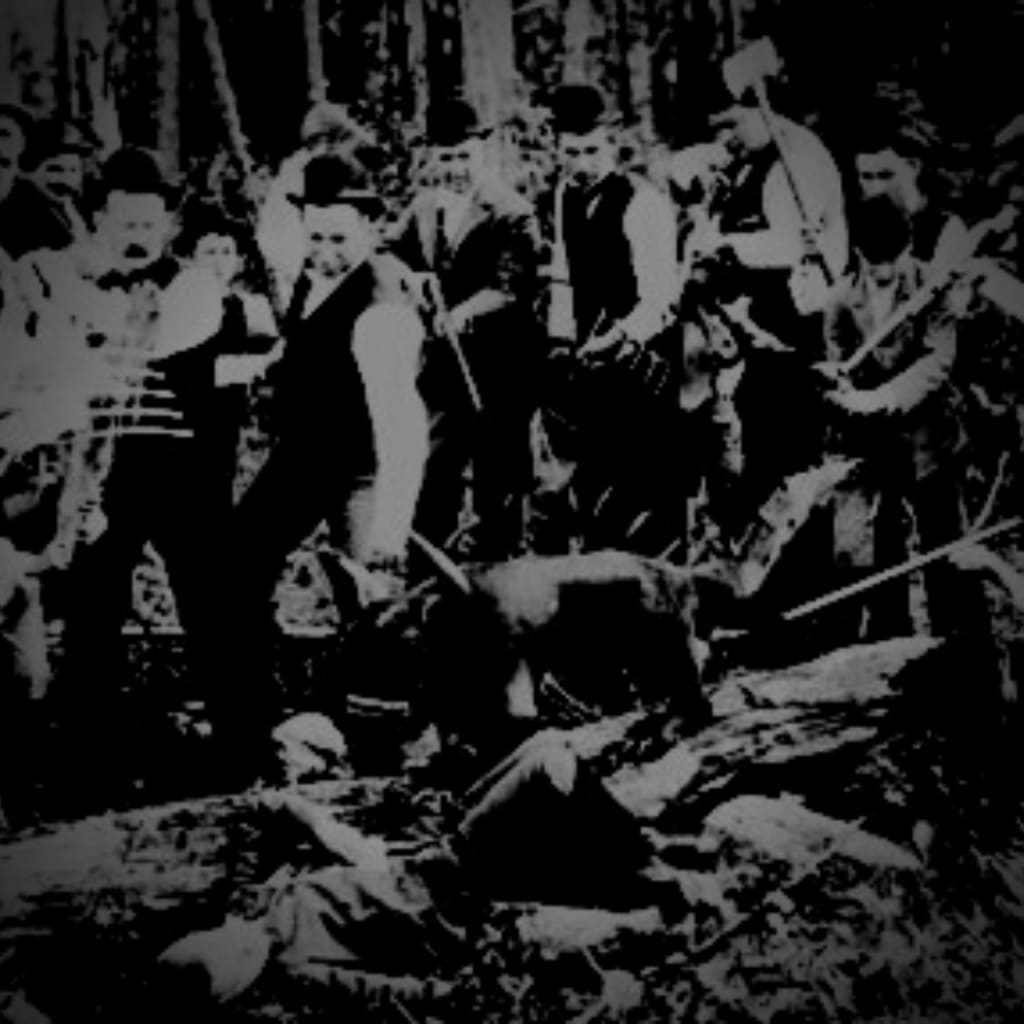
American folklore is full of strange creatures, myths, and ghosts. Like other parts of the world, many local legends from towns in America go mostly unheard of unless you're looking for them. A small city called Rhinelander, in upper Wisconsin, is one of those places. It's home to a creature known as the "hodag."
If you're American and speak English as your native language, then there's no trick to pronouncing it. It sounds like hoe (as in the garden tool)+dag (as in dagger). Lucky for all of us, Forvo came through on this small local legend, and someone from the U.S. East Coast had already recorded themselves pronouncing the word hodag. Just remember that it's spelled without the 'e,' though, because "hoedag" is actually a brand of gardening tools, while "hodag" is a critter up in Wisconsin that can and will kill you.

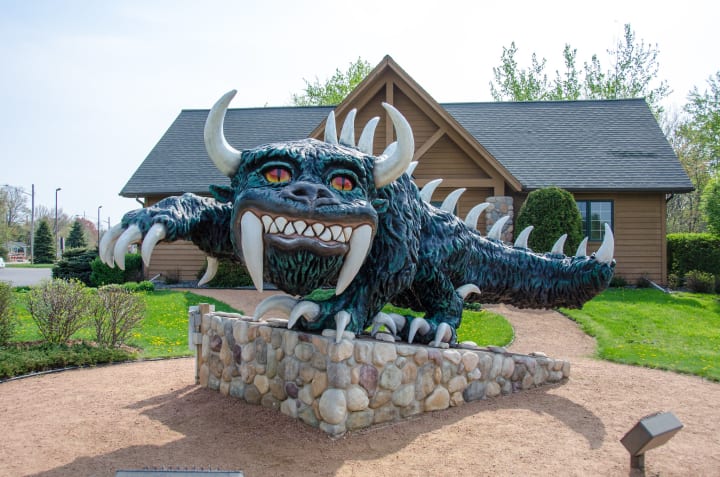
Now that you know the difference, grab your hoedag, and let's hop over to Rhinelander, Wisconsin, to learn more about the hodag. It's a creature with an unusually disturbing origin story and is one of only a handful of cryptids that can be traced back almost to the very beginnings of when people started talking about it.
Rhinelander, Wisconsin
The city of Rhinelander gets its name from Frederic W. Rhinelander of epic mustache fame.
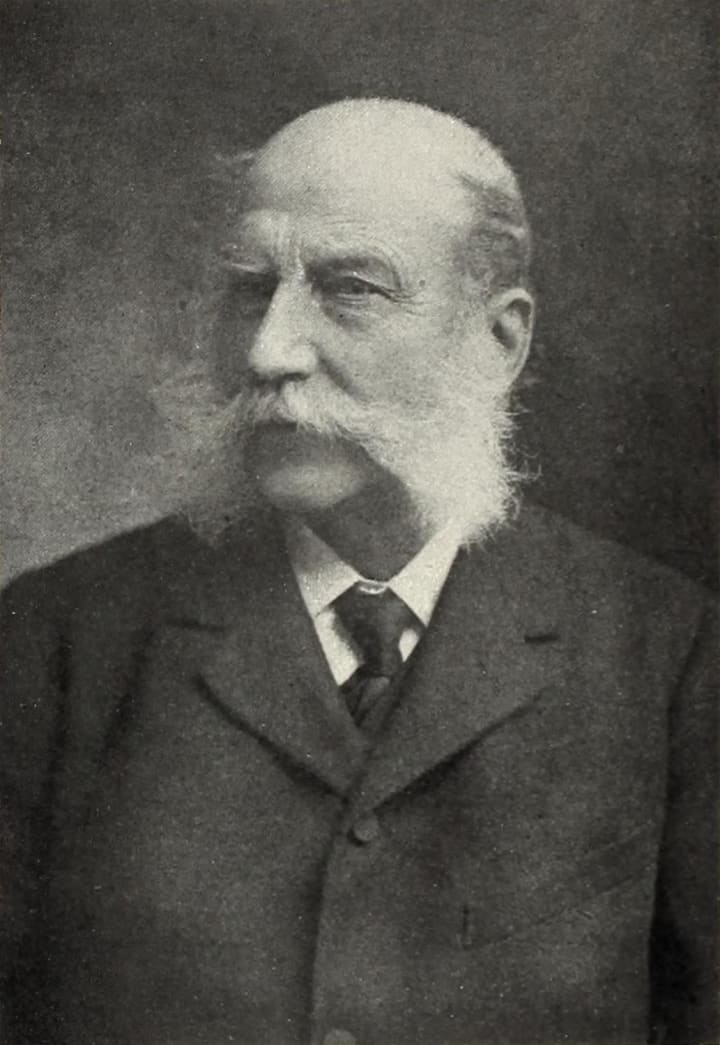
The city of Rhinelander was originally called "Pelican Rapids," but in 1881, it was renamed "Rhinelander" in an attempt to entice Big Railroad™ to extend to the city to help the local lumber business. It totally worked.

Rhinelander has a population of around 8,000 people, plus at least one hodag.
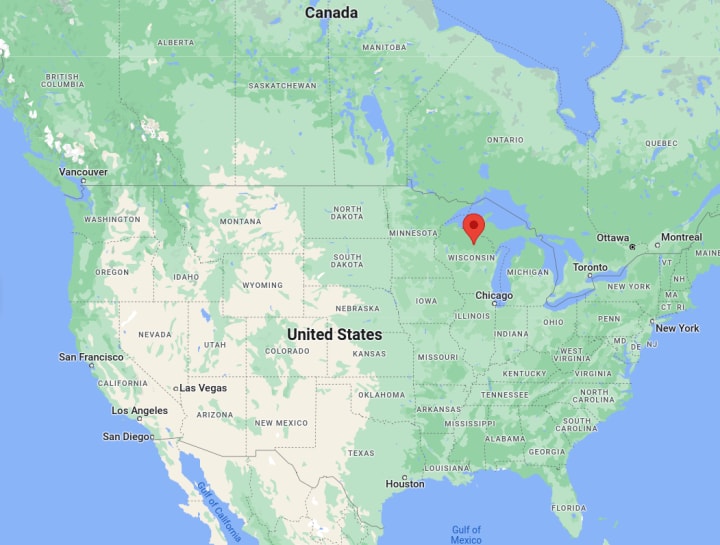
What Is a Hodag?
You may think that small-town Wisconsin might have cuddly cute cryptids, but you'd be very, very wrong.

That's an actual photo of a dead hodag from 1893, hence the low-res. Even with the low resolution, you can tell it looks like a cross between an ox and perhaps a Western goblin, with bull horns and a row of thick spines down its back. A book from 1928, titled The Hodag: And Other Tales of the Logging Camps, described the origin of the hodag as the embodiment of the abuse oxen suffered from their masters, born into physical form from cremated remains. That's like a villain origin story straight out of a modern-day comic book or film. Newspapers at the time reported that the hodag had "the head of a frog, the grinning face of a giant elephant, thick short legs set off by huge claws, the back of a dinosaur, and a long tail with spears at the end." You can see it for yourself—their description is pretty accurate.
Eugene Shepard, the man who captured the hodag in 1893, captured another in 1896—this time alive. He recruited a few bear wrestlers, and the group placed a chloroform rag at the end of a pole and stuck it into a cave where a hodag lived. How they knew where the hodag lived, that part is a bit unclear. They captured the hodag alive, and Shepard put it on display at the first Oneida County fair. The story went wide and was picked up in national news, catching the attention of the Smithsonian Institute in Washington, D.C. Scientists from the Smithsonian announced they were going to visit Rhinelander, and Eugene Shepard declared the whole thing a hoax.
But was it?
Hodag Hoax?
Yes, yes, it was.
Eugene Shepard admitted that the "live" hodag was a wooden puppet his sons helped him move with wires. He even claimed to keep it in his barn, and when people came to see it, he'd disappear from sight, make a horrendous commotion, and return a few minutes later with his clothes in tatters, claiming the hodag wasn't viewable because he was angry. As far as county fair went, Shepard earned up to $500 in a weekend of hodag showings—roughly equivalent to $3,300 in 2022 money.
So, the entire thing was considered a hoax—a creature and myth invented by Eugene Shepard.
Only—it wasn't.
Locals from the area had a legend of a creature similar to a hodag, and stories had been going around about it for quite some time.
Mishipeshu of Ojibwe
Take a look at the photos below, and see if you see a resemblance to the hodag.
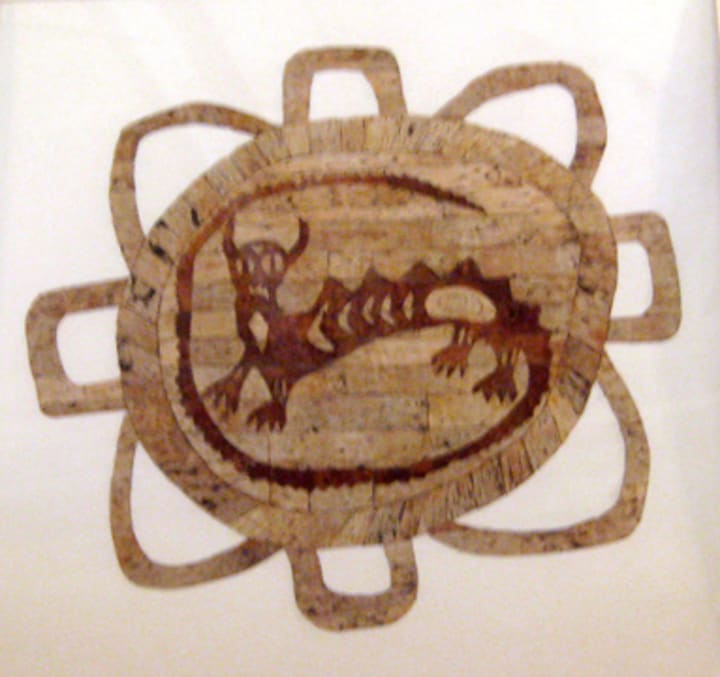
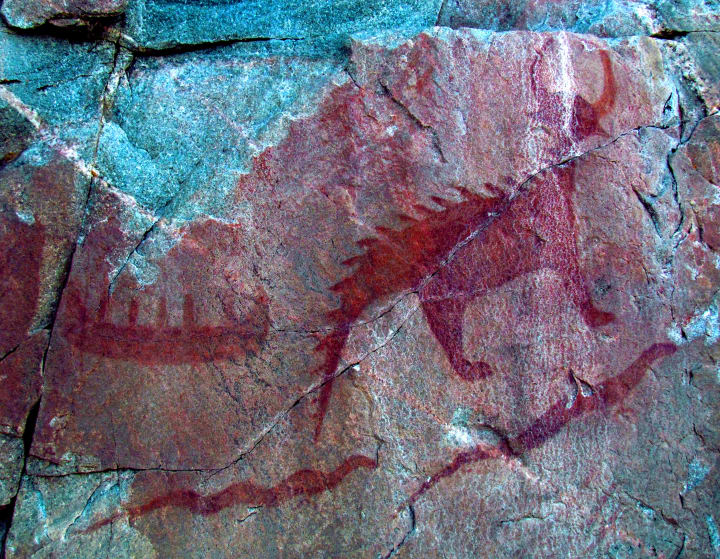
What you see in those pictographs is an "underwater panther"—also known as Mishipeshu or Mishibijiw in Ojibwe. The pictographs on Agawa Rock are thought to be somewhere between 150 and 400 years old—way before the time of Eugene Shepard. The word "mishipeshu" roughly translates to "great lynx," and Indigenous legends of several tribes from the area describe it as having the head and paws of a giant cat but covered in scales, with thick spikes running along its back and tail. Interestingly, a Jesuit missionary named Claude Dablon documented a story that was published in 1899 about four Ojibwe people who had a deadly encounter with the creature. You can read that online at the Kripke Center at Creighton University in a digital copy of Jesuit Relations, Volume LIV, 1899. just CTRL+F for "Missibizi" and you'll find the right area.
So, are the hodag and the mishipeshu depicting the same thing? It depends on who you ask—the answer isn't as clear as you might think.
Paul Bunyan's Hodag
It wasn't only Indigenous peoples that had stories with some similarities to the hodag. Have you ever heard of Paul Bunyan? If you grew up in America, I'd say chances are good that you have. But you may have never heard the name if you aren't American. Paul Bunyan is a giant lumberjack and folk hero with a blue ox from American and Canadian folklore—and there were stories of Paul Bunyan and the exact hodag creature that Shepard supposedly caught—but the earliest known reference to Paul Bunyan is from March 17, 1893, and the earliest recorded story of Paul Bunyan's exploits didn't come until 1904.
Hodag's Lasting Legacy
Rhinelander is full of hodag—in the form of statues, bumper stickers, souvenirs, and that huge hodag statue you've already seen in front of the Rhinelander Chamber of Commerce. There are even several hodag songs like Larry Mullins & The Sugarbush Hill Boys - The Hodag Song and I saw a Hodag - Kerry Exotic, and The Hodag Song by Bob Sebbo, and also The "Hodag" Song 2011 by Rob "Lefty La-Roo" Letvinchuck.
And, as mentioned above, it's not just songs. On July 16h, 1960, The Rhinelander Daily News reported that then-Senator John F. Kennedy and Mrs. Kennedy were given a miniature hodag during a visit to Rhinelander. In 1978, the Hodag Country Festival started and became an annual tradition that continues today. Rhinelander High School even has the hodag as their mascot, so regardless of whether or not the whole thing was a hoax, the legend of the creature lives on today.
Relevant & Related
- The film Backwoods Bloodbath, from 2007, is an old-school gore horror about a hodag haunting the northern woods of Oneida County in Wisconsin. Trailer for Backwoods Bloodbath.
- There was also a film from 2016 called "The Hodag" made by Hadrien Royo and Danielle Trussoni—but, sadly, I couldn't find anywhere to watch it. So, if you happen across a place, please let me know. There isn't much information about it, but I did find the old Indiegogo campaign to fund it.
- Watch a Rhinelander resident recount his story of sighting a hodag while he was out mushroom hunting.
- Check out The Terrible Hodag and the Animal Catchers Hardcover by author Caroline Arnold and illustrator John Sandford.
- There's a free ~45-minute documentary about the hodag on Shiver's YouTube Channel: The HODAG: What Is This Terrifying Forest Creature Attacking Pedestrians?
- Even more hodag documentary action over at Mythical Beast In Wisconsin?
- Wisconsin has an entire hodag vibe—it's a whole subculture all on its own. You can see what I mean here: Hodag Hunters - A Ghostbusters parody.
- Scooby-Doo! Mystery Incorporated had an episode about the hodag called The Hodag of Horror. The villain reveal is absurd, just as you'd expect, and the episode even features a giant wheel of cheese.
- Can't get enough Wisconsin? Check out another article I wrote: The Ridgeway Ghost of Wisconsin.
~
Originally published in my weekly newsletter Into Horror History—every week, I explore the history and lore of horror, from influential creators to obscure events. Cryptids, ghosts, folklore, books, music, movies, strange phenomena, urban legends, psychology, and creepy mysteries.
About the Creator
J.A. Hernandez
J.A. Hernandez enjoys horror, playing with cats, and hiding indoors away from the sun. Also, books. So many books—you wouldn't believe.
He runs a weekly newsletter called Into Horror History and writes fiction.
https://www.jahernandez.com


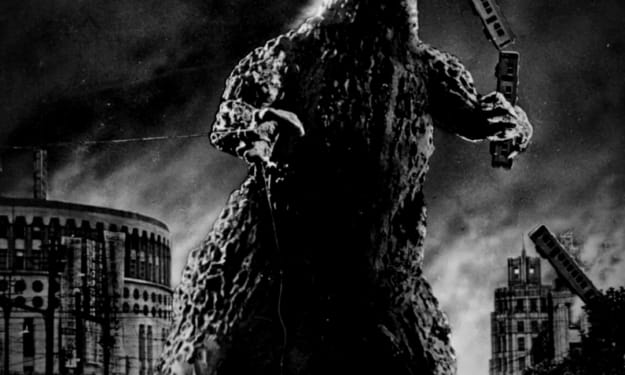



Comments
There are no comments for this story
Be the first to respond and start the conversation.